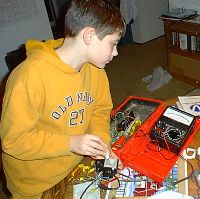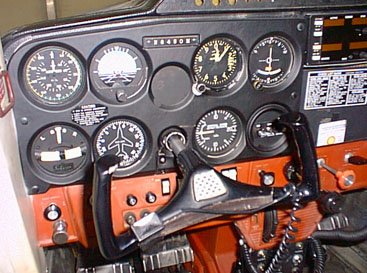
| Science and Technology Gear | |
| Here's a list of the science and technology equipment used for this homeschool project: | |

|
Scientific Calculators. Joe is using the TI-30Xa, a good solid basic function scientific calculator |

|
Aviation Scanning Radio Receiver. Its hard to get the hang of the rapidly-spoken pilot lingo. Tuning in this radio to the local tower frequency, Joe can hear many, many radio calls and pick up the cadence and format. Plus, its darn fun to follow the airplanes! We purchased a RadioShack Pro-76 scanning receiver for about $99 |

|
Graduated cylinder barometer. Joe made his own barometer using a $2 surplus graduated cylinder, and following the directions in 175 Science Experiments Of course Joe reads a regular barometer also. More on this project on the Barometric Pressure page. |

|
Airplane! Here's the instrument panel from Joe's favorite airplane (the Cessna 150 "50Mike"), which he is learning to fly, including all of the airmen's knowledge of these instruments required to pass the FAA written test for the private pilot certificate. This is Joe's view, from the left-hand seat. |
The start of the simulator, showing a right window monitor temporarily place. |
Flight Simulator. We're building a flight simulator to be as realistic
as possible, eventually have multiple "wraparound" monitors(front view and side "windows"),
rudder pedals, control yoke and realistic panel controls for flaps, throttle, richness, trim, gear,
We plan to build the electronic components ourselves (panel, rudder pedals and yoke), using scrounged parts as much as possible. Joe is interested in the electronics and this project should be very educational for him. |
Back to: Logs, Field Trips and Other Events
Contact: Fritz Funk (fritzf@alaska.net)